#corporate history
Video
youtube
Who’s to Blame for Out-Of-Control Corporate Power?
One man is especially to blame for why corporate power is out of control. And I knew him! He was my professor, then my boss. His name… Robert Bork.
Robert Bork was a notorious conservative who believed the only legitimate purpose of antitrust — that is, anti-monopoly — law is to lower prices for consumers, no matter how big corporations get. His philosophy came to dominate the federal courts and conservative economics.
I met him in 1971, when I took his antitrust class at Yale Law School. He was a large, imposing man, with a red beard and a perpetual scowl. He seemed impatient and bored with me and my classmates, who included Bill Clinton and Hillary Rodham, as we challenged him repeatedly on his antitrust views.
We argued with Bork that ever-expanding corporations had too much power. Not only could they undercut rivals with lower prices and suppress wages, but they were using their spoils to influence our politics with campaign contributions. Wasn’t this cause for greater antitrust enforcement?
He had a retort for everything. Undercutting rival businesses with lower prices was a good thing because consumers like lower prices. Suppressing wages didn’t matter because employees are always free to find better jobs. He argued that courts could not possibly measure political power, so why should that matter?
Even in my mid-20s, I knew this was hogwash.
But Bork’s ideology began to spread. A few years after I took his class, he wrote a book called The Antitrust Paradox summarizing his ideas. The book heavily influenced Ronald Reagan and later helped form a basic tenet of Reaganomics — the bogus theory that says government should get out of the way and allow corporations to do as they please, including growing as big and powerful as they want.
Despite our law school sparring, Bork later gave me a job in the Department of Justice when he was solicitor general for Gerald Ford. Even though we didn’t agree on much, I enjoyed his wry sense of humor. I respected his intellect. Hell, I even came to like him.
Once President Reagan appointed Bork as an appeals court judge, his rulings further dismantled antitrust. And while his later Supreme Court nomination failed, his influence over the courts continued to grow.
Bork’s legacy is the enormous corporate power we see today, whether it’s Ticketmaster and Live Nation consolidating control over live performances, Kroger and Albertsons dominating the grocery market, or Amazon, Google, and Meta taking over the tech world.
It’s not just these high-profile companies either: in most industries, a handful of companies now control more of their markets than they did twenty years ago.
This corporate concentration costs the typical American household an estimated extra $5,000 per year. Companies have been able to jack up prices without losing customers to competitors because there is often no meaningful competition.
And huge corporations also have the power to suppress wages because workers have fewer employers from whom to get better jobs.
And how can we forget the massive flow of money these corporate giants are funneling into politics, rigging our democracy in their favor?
But the tide is beginning to turn under the Biden Administration. The Justice Department and Federal Trade Commission are fighting the monopolization of America in court, and proposing new merger guidelines to protect consumers, workers, and society.
It’s the implementation of the view that I and my law school classmates argued for back in the 1970s — one that sees corporate concentration as a problem that outweighs any theoretical benefits Bork claimed might exist.
Robert Bork would likely regard the Biden administration’s antitrust efforts with the same disdain he had for my arguments in his class all those years ago. But instead of a few outspoken law students, Bork’s philosophy is now being challenged by the full force of the federal government.
The public is waking up to the outsized power corporations wield over our economy and democracy. It’s about time.
1K notes
·
View notes
Text
A Fair Warning
It was only a matter of time, and a long awaited and well deserved comeuppance, when Joker tried to hurt the wrong person or people.
Not everyone was going to play his games like 'Batsy' does. Not everyone will hesitate or let him live should he put his hands on someone to hurt them. Not everyone will believe Arkham could 'fix' him, he just needed more time and help.
No.
This time Joker bit off more than he could chew when he kidnapped the newly hired Arkham psychiatrist Jasmine Fenton (and he had plans, so many plans, for her. With her mixture of Harley's mind and her looks matching Gordon's daughter would sure to cause some chaos and pain in memories) and the girl's visiting sister Danielle 'Ellie' (and did he laugh when he noticed the 'Wayne' adoptive looks the girl had, on the fun he'll have, maybe he'll beat her the way he beat the second Robin just for funzie's, it'll no doubt upset Batman) from Jasmine's apartment.
He had plans to keep the Bats guessing where he was and by the time they reach him it'll be far to late for them to save either of the two girls, he had just sent the little video he taped to the Bats and the police to get the ball rolling...
So...
So why did a shiver run down his spine for the first time in years when they both looked unafraid (it was their eyes that made him shiver, a look of already dead yet somehow alive, something he never seen before. He's seen the light fade from people's eyes before yes, he's even laughed as he watch people desperately cling onto life only for it to fade into nothing as they took a final breath but never have he seen someone, something alive yet dead at the same time before. It, their eyes, held a natural yet unnatural sense as they stared at him, stared at everything that made him Joker and it unnerved him), honestly they looked very bored, and one of them (the youngest of the two, and the one with more of the look of death than life in their eyes) said with a chill tune in their tone.
"Last chance to back out of this Freakshows Reject. You wont like what'll be waiting for you."
The tone alone was enough to send another bone deep chill down Joker's spine.
But instead of listening to his natural instincts, the deep inkling of run blaring at him, Joker merely placed a grin on his face, ignoring the strain he felt from doing so, and said as nastily as he could in order to scare the two girls (BOTH OF THEM STILL LOOKED BORED WITH HIM?!?! Not even a twitch of fear!)
"OH? And pray tell what is awaiting little ol' me hum?"
His mocking question got a wide feral grin from the smaller girl, a grin with sharp teeth and iris eyes beginning to bleed slowly from sky blue to neon green with each second he stared at her and he barely stopped himself from jumping in his spot when Jasmine answered his question.
"Your end."
-x-x-
By the time the Bats get to the warehouse Joker had taken Dr. Jasmine 'Jazz' Fenton and Danielle 'Ellie' Fenton they were prepared for anything and everything to go wrong. As much as they held the tiniest bit of hope that the two young women were still okay they knew better than to really do, this was the Joker that had them after all.
They had manged to narrow down his location much quicker than normal when they gotten Joker's first video and his little 'game' he was setting the Bats on, most locations he gave them were going to be red herrings or traps to keep them busy and it would had worked. Batman and the others would had been searching for hours for even a hint of the clue of where the Joker and his hostages were actually being kept.
It was nearly, not really, a shame all of Joker's plans went to waste when Red Hood had stumbled onto something when scooping out Jasmine's apartment with Red Robin.
You see, not only were they looking for clues at first but something about the apartment Jasmine rented seemed off, Red Robin noticed it first and called in back up encase there was more to oldest Fenton than what they could dig up (oldest daughter of Dr's. Jackson and Madeline Fenton, grew up in a small Illinois town, straight A student and a goal to become a psychologist, has two younger siblings, etc etc) and their suspension raised up more when the moment Red Hood entered the apartment and seemed to freeze for a moment.
Red Hood couldn't really explain it but he said it felt like something was... strange. Not evil bad danger strange but it felt familiar? Like he was a kid again on the streets and had walked into someone else's territory but knew the person wouldn't be too much of a hardass about it as long as he didn't stur up trouble or disrespect. A kind of... as long as you don't fuck around you won't find out feeling.
It was because of this feeling that Jason had manged to stumble across something in the room, his instincts telling him there was more to it, and they had discovered a clunky old custom PDA hidden away in a false floorboard in the office room. Thankfully Red Robin, was there in person because the old thing apparently had a rather ingenious firewall to keep others (aka Hackers) OUT but it did nothing against someone who held the main thing.
But still it took Red Robin almost frying the damn thing to get to open up, turns out the ghost and star stickers on the PDA was a rather large hint of the pass code. Once Red Robin was in the PDA he noticed some rather interesting files, one of them labeled "Gremlin Tracking" with a tiny green blob with red eyes and a green outlined star as the icons.
Curiosity taking a hold on the most curious of the Bats he opened it up, hoping it would need another password, and watched as the screen split into two maps, one was... strange, there was no land marks or anything but the star icon seemed to be right in the middle of wherever it was and the only hint of anything was the name "baby brother" and the map labeled as IR.
The other one showed an above map of Gotham, before zooming into the city, heading towards some abandoned warehouses Red Robin knew of and stopped right at one. This was the green blob icon, the short abbreviation for Gotham in the corner of the map, and the name for the icon was 'baby sister'
Red Robin immediately got onto coms to tell the others of what apparently was a tracker for Jasmine's younger siblings. Some questioned why the young woman had trackers on her siblings, though some of the others snarked back that "oh didn't know keeping trackers on each other wasn't normal. Mind if I loose the one you got on me than?"
After a quick sweep into the warehouses camera feeds, the very few up that could be accessed, done by Oracle they quickly discovered that yes the tracking on the younger girl of the two, Danielle Fenton, was correct and that was where they and Joker were at.
Despite this, Batman decided that in order to make sure Joker didn't have suspicion that they already know his actual location he made sure to send a few of the others to the fake locations.
So here they were now, staking out the warehouse where they could see a few of the Jokers goons walking around and looking for a way into the building without alerting any of them. As they talked low into coms, Robin mentioning a possible way in for Red Robin by how small it was, Red Robin hissing back a "just because you got a growth spurt doesn't mean you can poke fun at my height you little-"
"Wait!" Red Hood suddenly hissed shouted, his tone startling the rest of them and they all turned their heads to him. Batman made a quick and harsh grunt as a way to say "report."
Under his helmet Jason's eyes were wide and wild. He could feel something, something huge was on the rise, like something was out of sight but the energy of it was felt.
And if Jason could feel it from his spot, the Jokers goons all felt the same thing from the way they all dropped their weapons, turned toward the warehouse and looked ready to bolt like scared animals.
Jason opened his mouth to explain but fell silent when the feeling suddenly popped. Whatever was causing the feeling was here and like the calm before the storm he could only watch as the first drop of rain fall.
The next thing they know, was the noise and the screaming.
It was inhuman, a mixture of noise and sounds to hard to explain. The closest they could explain was a thousand voices coming in all at once mixing with radio static that kept changing volume so only few words could be even hinted at, and the angry cawing of crows along with the flapping of their wings as they took flight. The noise was so bad that many who heard it nearly ripped their coms out, or covered their ears. Thankfully it only lasted a few seconds.
Then, the air itself shifted. It felt like the coldest of winter nights and bone chilling shivers ran down their bodies for a moment. The air was suddenly that sharp cold that hurt to breathe sometimes.
The goons surrounding the warehouse fled in fear. Many scrambling to get far, far away from whatever was happening. If they felt even a fraction of what Jason could feel, he could understand. He honestly felt like a small animal cornered by a predator and there was no escape.
Then just as suddenly as it happened, everything shifted again. The noise of Gotham returned to normal, cars honking, a stray cat hissing or a dog barking, police sirens in the distance, hissing steam from a nearby factory. The air went from winter cold to a chill mid winter harbor feel now.
Once everyone registered what had just happened and not wanting to waste anymore time they bolted towards the warehouse, cautious and alert in case they needed to fight. Batman went in first, quickly making his way to the area he knew Joker would be with the Fenton sisters and wondered just what the fuck was that? Did Joker do something? Was he messing with things outside of his usual MO?!
He walked into the room and stopped.
There was nothing.
The room was in fact the room Joker had used to record his first message to them, the layout was correct and the evidence of two people who had been tied up were still there as well, ropes that weren't cut sitting on them, a lone lamp light above shining down from above no doubt to emphasize the two girls were meant to be the 'stars' of Jokers latest show. Thing was, the two weren't there despite the fact Oracle swore she could see them a few mins ago from a camera set up in the room, she would later explain that she heard the noise as well and that all her tech had glitched hard.
The only other thing in the room was, sitting innocently on one of the chairs was a green sticky note and on a tiny pillow was a tiny sickly green orb with hints of purple, white, and red swirling in it.
A note they would later read the following message written on it after carefully examining it over.
'Joker learned not to touch what is mine to protect. Sorry not sorry, but hey one less killer clown and he was warned not my fault he didn't take it seriously... The massive amount of souls wanting to rip apart the Joker's soul into nothing was quite a sight to be honest.
They were so ruthless. Best not mess with the vengeful dead am I right?
PS. I left a tiny gift for Jason Todd aka Robin Two. It's the tiniest piece of Joker's soul left over after everyone else got done. He can finish it off since he's a reverent and all, and well they need their revenge filled in order to peacefully move on later or else they'll be stuck forever in a loop of madness and revenge. So yeah. Hope he likes the gift.'
D.P.'
It took Jason less than a second after those words were spoken out to reach for the orb, ignoring the cautious and alarmed cries of the others, and could feel deep, deep, deep in his own soul the absolute pure weeping joy as he threw the orb onto the floor, the bottom shattering thus it didn't roll away and stomped hard with his reinforced boots. Crushing the broken orb into more pieces and if one listened closely they could hear the pure screaming terror that came from it.
And Jason for the first time in years felt his rage finally leave him.
#danny phantom dc#danny phantom#danny fenton#dp x dc#crossover#blue rambles#writing ideas#random idea#dpxdc#Danny is like a cryptid in this one#is he the Ghost King? Or just a very very powerful ghost that can help stabilize other ghosts into a corporal form? idk you pick#The Bats return to base only to find all data on Jazz gone#even the report on her and Danielle being kidnapped are gone#even the Joker's recording is gone#like it never happened#if they try confronting her she only smiles and says she warned him or says 'Joker who?'#The only thing they have left that's proof is the sticky note and the PDA Tim still has#when he later looks at the history and data he noticed it move#for a few mins the tracker for 'baby brother' had moved from IR to Gotham right next to 'baby sister' before returning to IR with the other#this happened right on the dot of Jason warning them to wait#I love writing the 'Joker fucked around and found out' stories tbh#any mistakes I will fix later#I still need new glasses can barely see rn
1K notes
·
View notes
Text
Succession complexities: Separation of ownership & management control can attract professionals with diverse skills
Succession complexities: Separation of ownership & management control can attract professionals with diverse skills
Corporate history shows us how promoters are great at starting and building, but usually terrible at letting go and allowing the organisation to grow into a second phase of life without them, with a different leader at the helm. There have been numerous such examples of poor succession planning in Indian enterprises. And they make depressing reading: Of fathers and sons squaring off in court, of…

View On WordPress
0 notes
Photo

“$5 Millions Annual Payroll for Vancouver in Plane Making; Assembly Line Production Developing at Boeing Plant as Shortage of Materials Being Overcome,” Vancouver Sun. February 7, 1942. Page 26.
----
Work On PBY's Pushed For Increased Output Ahead
----
By JACK MEEK
Vancouver Sun Financial Editor
The last few weeks have seen a new phase of production devel oping at the Boeing plant, on Sea Island, where twin-engine PBY Consolidated amphibian planes are being made. To the layman, whose information has been scant due to necessary restrictions by the military on news concerning the progress of the plant, this may be interpret ed as meaning that the first complete plane will shortly run off the assembly line.
While this is not exactly the case, various changes now taking place, and also many revisions which are still in the planning stage, will play an all-important part In the future production of the plant.
Two main factors stand out:
Plant layout is being stream lined to handle higher rate of production than was previously anticipated.
The shortage of some key materials which must be brought in from other parts of the continent is being quickly over come.
There has been no delay in the production of those parts of the plane which have been made entirely in the plant. As a matter of fact, it can be said that delivery of spare parts of the PBY aircraft made at the Sea Island plant such as ailerons,- wings, wing tip floats, horizontal stabilizers, rudders and fins, to mention but a few, are well ahead.
Recently some 25 carloads of spare parts were shipped east to be used in PBY planes, which are doing such a great job In the Atlantic patrol, and this is only a portion of shipments of all types.
It is significant that it was a PBY aircraft, exactly the same as those being manufactured on Sea Island, that located the Bismarck and summoned units of the British Fleet to sink the Nazi raider.
ASSEMBLY ONE WORK
The main shortage of materials has been experienced in parts for the hull and centre sections of the craft, which must be import ed. There are presently five jigs set up for making of the hulls. On No. 1 hull, each section is complete in which parts made in the Sea Island plant are used, but the remainder of the hull awaits delivery of essential parts from outside.
All this is being experienced while one corner of the building is filled with detailed parts made in the plant which'could be going into assembly of a complete airplane but for a scarcity of other parts which has been the case up to this time.
Of the plant itself, plans are going forward to take care of bigger production. The machine shop is going on a seven-day week. As the transition takes place it is noted that the emphasis has shifted from the construction of productive facilities to the actual production of thousands of parts from scores of different materials.
Areas formerly used for storage of supplies and such are now being. changed to fit into a new picture that of assembly line production, starting from sub assembly at the beginning of the line right to the assembly of the hulls, then the wings, installation of motors and, finally, the completed plane, ready for its tests:
MUCH 'SPADE WORK'
The whole thing has been a tremendous undertaking, not the least of which has been organization work." It is the first time such a venture as the Sea Island plant has been attempted in this section of Canada.
In many centres of the United States, production of planes has been under way for years, with its attendant research and with the needed increase In production of planes, it was a comparatively simple matter for established American companies to boost output, whereas here, everything was started from scratch, as it were, and with the further difficulty of training workers, the great majority of whom had no previous experience in aircraft factories.
Today, Boeing plant employees have developed, and are developing into craftsmen who are not only In great demand in wartime, but have a valuable trade to fit into the post-war scheme of things when production of commercial planes will surpass all previous records.
It is a feature of the Boeing plant, that almost any type of plane can be. manufactured there and after the war, it will be an important cog in the airplane manufacturing business In Canada.
5000 EVENTUALLY
The Sea Island plant, known as No. 3 plant, was completed loss than a year ago and small shop units wore moved in in March, when there were no doors or windows. At that time there were 1208 employees, counting the totals at plants 1 and 2. The overhaul plant, known as plant No. 4, was completed m July. By last November, approximately six months after the No. 3 plant was completed, employment at the four plants had Increased to 2700 men and women, and today it is over the 3000 mark.
When full production is attain ed some 5000 will be employed. There are about 75 or 80 women doing shop work and another 25 were scheduled to start immediately.
Thus the Boeing Company plays an important part in the economic well-being of wage-earners and business in Vancouver and the surrounding area. The annual payroll of the four plants is nearly five million dollars and the value pf plant and tooling equipment is more than two million dollars.
It is a far cry to the boom days of the "twenties" when Boeing Aircraft of Canada was first formed in Vancouver in 1929 with a Dominion charter for the purpose of building aircraft, yachts, tugboats, and marine overhaul. For the past year or more, marine work has been virtually discontinued and is being operated under lease to another company.
HAD BEST RECORD
In the early days the company produced Boeing 40-H-4 biplanes for passengers and mail and a number of Boeing flying boats. The latter were five-passonger, single-engine biplanes. Later, the company designed and built the Boeing Totem, and a little more than a year ago, completed a Government contract for 17 Blackburn Shark torpedo planes. All the above work was done in plants 1 and 2.
Other work has been a Government contract concerning building of spars, flaps, ailerons, tail units and fittings for Avro Alisons. Boeing had the best record In Canada for Anson parts. Other work in plants 1 and 2 ;is sub-contracting parts for Hawker Hurricanes.
Wing spars were also made for Noorduyn Aviation Ltd. and work is now going ahead on parts for Fairey Battles at Plant No. 1.
Plant No. 4, which is directly off the east end of the big plant at Sea Island, houses the overhaul shop. This Is running in full sway with work on Strarears, Lockheed Hudson, Lockheed 1O's, Gruinmans and other Royal Canadian Air Force craft.
Opening of No. 3 and 4 plants more than tripled the company's pre-war space, increasing it from 83,400 feet to around 400,000 font. At the No. 1 plant there Is 41,800 feet, 41,600 feet at No. 2, 224,000 feet at No. 3 and 85,000 at No. 4.
This is the story of Boeings. It gives some idea of the work being done and the stake Vancouver people have in its future.
“Giants of the Skies Take Shape at Sea Island,” Vancouver Sun. February 7, 1942. Page 26.
----
Here are a few pictures taken in the Boeing plant at Sea Island, where PBY Consolidated amphibians are being made. These planes are playing an important part in the defense of Britain.
1. The PBY is a large plane with a wing spread of 104 feet. This picture is of the tail assembly. which is 30 feet across, approximately equal to the wing spread of a Hawker Hurricane. It's size can also be judged by that of the worker in the picture, C. Ladyk.
2. Working on wing tip floats. This float is retracted in flight and serves as a wing tip. During landing it is extended to a position below the wing tip and serves- to stabilize the aircraft laterally when on the water.
3. Gordon McPhail, who is nearly six feet tall, stands up in a wing section to buck some rivets.
4. The size of a machine turret, or blister, of which there are two on the hull of the FYB, can be judged by comparing it with the size of the man in the above picture, Oscar Koos, who inspected the plant. The light colored structures in the picture are sections of the jig and the black circular outline shows where the edge of the blister will be.
5. A rivet maker displays, the largest and smallest rivets made in the plant and used in the PBY.
#sea island#richmond british columbia#vancouver#airplane factory#airplane production#boeing#corporate history#war propaganda#corporate propaganda#fairey battle#pby catalina#royal canadian air force#aircraft workers#assembly line workers#capitalism in canada#capitalism at war#canada during world war 2
0 notes
Text
A taxonomy of corporate bullshit
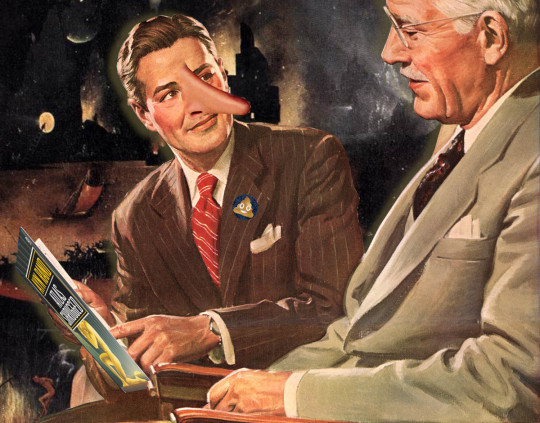
Next Tuesday (Oct 31) at 10hPT, the Internet Archive is livestreaming my presentation on my recent book, The Internet Con.

There are six lies that corporations have told since time immemorial, and Nick Hanauer, Joan Walsh and Donald Cohen's new book Corporate Bullsht: Exposing the Lies and Half-Truths That Protect Profit, Power, and Wealth in America* provides an essential taxonomy of this dirty six:
https://thenewpress.com/books/corporate-bullsht
In his review for The American Prospect, David Dayen summarizes how these six lies "offer a civic-minded, reasonable-sounding justification for positions that in fact are motivated entirely by self-interest":
https://prospect.org/culture/books/2023-10-27-lies-my-corporation-told-me-hanauer-walsh-cohen-review/
I. Pure denial
As far back as the slave trade, corporate apologists and mouthpieces have led by asserting that true things are false, and vice-versa. In 1837, John Calhoun asserted that "Never before has the black race of Central Africa, from the dawn of history to the present day, attained a condition so civilized and so improved, not only physically, but morally and intellectually." George Fitzhugh called enslaved Africans in America "the freest people in the world."
This tactic never went away. Children sent to work in factories are "perfectly happy." Polluted water is "purer than the water that came from the river before we used it." Poor families "don't really exist." Pesticides don't lead to "illness or death." Climate change is "beneficial." Lead "helps guard your health."
II. Markets can solve problems, governments can't
Alan Greenspan made a career out of blithely asserting that markets self-correct. It was only after the world economy imploded in 2008 that he admitted that his doctrine had a "flaw":
https://www.pbs.org/newshour/show/greenspan-admits-flaw-to-congress-predicts-more-economic-problems
No matter how serious a problem is, the market will fix it. In 1973, the US Chamber of Commerce railed against safety regulations, because "safety is good business," and could be left to the market. If unsafe products persist in the market, it's because consumers choose to trade safety off "for a lower price tag" (Chamber spox Laurence Kraus). Racism can't be corrected with anti-discrimination laws. It's only when "the market" realizes that racism is bad for business that it will finally be abolished.
III. Consumers and workers are to blame
In 1946, the National Coal Association blamed rampant deaths and maimings in the country's coal-mines on "carelessness on the part of men." In 2003, the National Restaurant Association sang the same tune, condemning nutritional labels because "there are not good or bad foods. There are good and bad diets." Reagan's interior secretary Donald Hodel counseled personal responsibility to address a thinning ozone layer: "people who don’t stand out in the sun—it doesn’t affect them."
IV. Government cures are always worse than the disease
Lee Iacocca called 1970's Clean Air Act "a threat to the entire American economy and to every person in America." Every labor and consumer protection before and since has been damned as a plague on American jobs and prosperity. The incentive to work can't survive Social Security, welfare or unemployment insurance. Minimum wages kill jobs, etc etc.
V. Helping people only hurts them
Medicare will "destroy private initiative for our aged to protect themselves with insurance" (Republican Senator Milward Simpson, 1965). Covid relief is unfair to people that are currently in the workforce" (Republican Governor Brian Kemp, 2021). Welfare produces "learned helplessness."
VI. Everyone who disagrees with me is a socialist
Grover Cleveland's 2% on top incomes is "communistic warfare against rights of property" (NY Tribune, 1895). "Socialized medicine" will leave "our children and our children’s children [asking] what it once was like in America when men were free" (Reagan, 1961).
Everything is "socialism": anti-child labor laws, Social Security, minimum wages, family and medical leave. Even fascism is socialism! In 1938, the National Association of Manufacturers called labor rights "communism, bolshevism, fascism, and Nazism."
As Dayen says, it's refreshing to see how the right hasn't had an original idea in 150 years, and simply relies on repeating the same nonsense with minor updates. Right wing ideological innovation consists of finding new ways to say, "actually, your boss is right."
The left's great curse is object permanence: the ability to remember things, like the fact that it used to be possible for a worker to support a family of five on a single income, or that the economy once experienced decades of growth with a 90%+ top rate of income tax (other things the left manages to remember: the "intelligence community" are sociopathic monsters, not Trump-slaying heroes).
When the business lobby rails against long-overdue antitrust action against Amazon and Google, object permanence puts it all in perspective. The talking points about this being job-destroying socialism are the same warmed-over nonsense used to defend rail-barons and Rockefeller. "If you don't like it, shop elsewhere," has been the corporate apologist's line since slavery times.
As Dayen says, Corporate Bullshit is a "reference book for conservative debating points, in an attempt to rob them of their rhetorical power." It will be out on Halloween:
https://bookshop.org/a/54985/9781620977514

If you'd like an essay-formatted version of this post to read or share, here's a link to it on pluralistic.net, my surveillance-free, ad-free, tracker-free blog:
https://pluralistic.net/2023/10/27/six-sells/#youre-holding-it-wrong
#pluralistic#corporate bullshit#lies#books#reviews#taxonomies#labor#denialism#consumerism#Nick Hanauer#Joan Walsh#Donald Cohen#history#object permanence#taking the right seriously
834 notes
·
View notes
Text








Control Data Corporation, an early pioneer in computing, was established in Minnesota on this day in 1957.
627 notes
·
View notes
Text
speaking of the Radium Girls...god, that story is enough to make a conspiracy theorist out of one, if one's not careful to remain levelheaded and make judgments based on reliable, peer-reviewed science
because like. yeah, corporations DO cover up the health dangers of their products for years on end. that's like a known thing they're quite fond of doing
heavy-metal dyes. radium. tobacco products. PFAs. the indoor tanning industry is STILL trying to argue that tanning beds don't give you cancer- I've read newspaper articles theorizing a link between UV and melanoma as far back as the 1940s, though I'm not sure the lack of coverage was corporation-related since tanning beds didn't exist yet and big holiday resorts had other draws besides sunbathing
I'm not going to go full "5G IS SATAN!!" or anything. the evidence of that, to my mind, is lacking; the evidence against it substantial (also some chucklefucks are selling definitely radioactive "anti 5G devices" so uh. that makes it pretty clear which the rational side is in that debate)
but you have to wonder- what could it be right now, without us knowing? what's the next radium?
#history#current events#radium girls#too much knowledge written in blood. you have to keep your wits about you and not fall prey to fearmongering#while still recognizing that you can't trust corporations to care about anything but their bottom line#anxiety
119 notes
·
View notes
Text
#talkin#tik tok#the history channel#war crimes#antisemitism#erich von däniken#disney#hearst media#hearst corporation#william randolph hearst#yellow journalism#wilhelm utermann#nazis
123 notes
·
View notes
Note
My headcanon for Modern!Machete before he encounters (re-encounters?) Vasco is that he works in some high-powered but low-profile position for an influential and well-known multinational. Like a corporate lawyer or accountant for Apple or Volkswagon or Shell. He's very, very good at his job, his assistants and staff think he's a good boss, his boss thinks he's great, but half his colleagues can't stand him because they think he got promoted for sucking up to their boss instead of for his skills (it was for his skills). He's got exactly enough interpersonal skills to recognize the problem and not enough to fix it. He gets paid extremely well, well enough to mostly pretend that he's happy and fulfilled (he still ends up happier in the Modern!AU because his job only sucks a little instead of literally destroying him. Also because modern medicine means his medical situation is much better understood and controlled). Yes this is all just the modern equivalent to what canon!Machete's got going on but it's startling how much carries over with no changes.
Oh that's so well thought out actually, I love that.
#man#not to get personal but that autism feeling when you're good at what you do but fail the face to face social affableness test#“enough interpersonal skills to recognize the problem and not enough to fix it” big mood#he thrives in professional settings because formality clear etiquette and solid social hierarchy are easier to navigate#than personal relationships which can be messy and vague and have unwritten rules and inside jokes that he's not privy to#“his job only sucks a little instead of literally destroying him” yeah that's what I've been thinking of as well#as much as I'd like to grant him his dream job in arts history fashion or such he really belongs in that cutthroat corporate hellscape#Vaschete scenarios#modern au#answered#anonymous
147 notes
·
View notes
Text
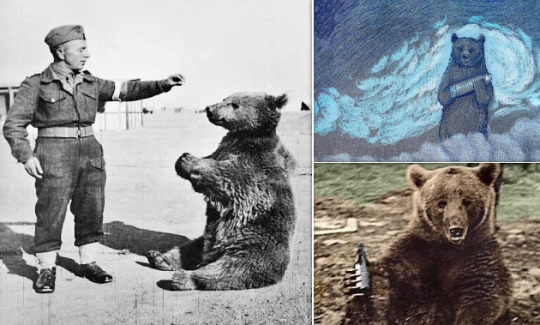
360 notes
·
View notes
Text
"Sarge?"
"Yes, Corporal Ping?"
"Why're some of you wearing purple flowers, Sarge?"
There was a subtle change in the atmosphere, a suction of sound caused by many pairs of ears listening intently. All the officers in the room had stopped writing.
"I mean, I saw you and Reg and Nobby wearing 'em this time last year, and I wondered if we were all supposed to..." Ping faltered. Sergeant Colon's normally amiable eyes had narrowed and the message they were sending was: you're on thin ice, lad, and it's starting to creak...
"I mean, my landlady's got a garden and I could easily go and cut a--" Ping went on in an uncharacteristic attempt at suicide.
"You'd wear the lilac today would you?" said Colon quietly.
"I just meant that if you wanted me to I could go and--"
"Were you there?" said Colon, getting to his feet so fast that his chair fell over.
"Steady, Fred," murmured Nobby.
"I didn't mean..." Ping began. "I mean...was I where, Sarge?"
Colon leaned on the desk, bringing his round red face an inch away from Ping's nose.
"If you don't know where there was, you weren't there," he said in the same quiet voice.
Terry Pratchett, Night Watch
#fred colon#nobby nobbs#reg shoe#corporal ping#night watch#discworld#terry pratchett#the glorious 25th of may#the watch#war#veterans#memorials#memory#war memorial#history#respect#experience#you had to be there#in the know#wear the lilac#were you there#long quote
488 notes
·
View notes
Text
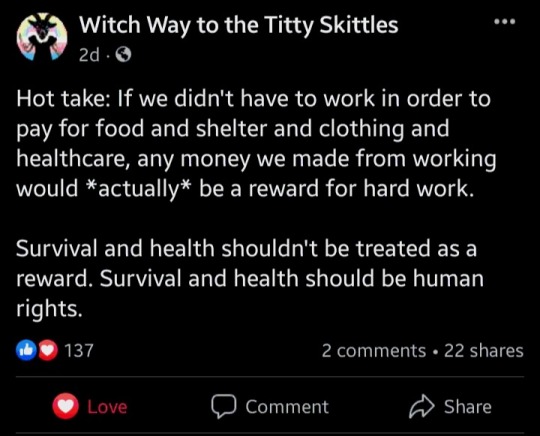
#information#learning#fyi#history#nature#science#the more you know#Capitalism sucks#Billionaires suck#tax the rich#tax the church#eat the rich#support unions#fuck capitalism#fuck the billionaires#fuck the corporations#Politics#fascist#GOP#right wing terrorism#right wing extremism#gop fascists#christofascists#evangelicals#conservative christians#white supremacists#maga#republicans#stupid people#Republicans are Fascist
52 notes
·
View notes
Text

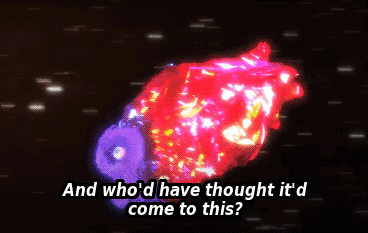


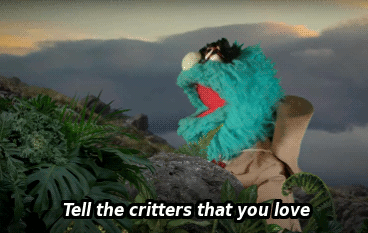



Puppet History: The Dreadful Demise of the Dinosaurs
#watcher#watcher entertainment#puppet history#puppet history spoilers#shane madej#this is the first gifset I've made since I lost photoshop and let me tell you#adobe is a corporate demon but they've really cornered the market on gifmaking#because using freeware for this was an absolute nightmare#anyway can't believe this silly puppet show made me misty-eyed about the meteor that killed the dinosaurs
780 notes
·
View notes
Text
Guy named Philip Buster who's only goal in any conversation is to make it last as long as possible
#45 minutes into a conversation:#'sorry i have a flight to catch'#'oh that's fine I'll come with you. so anyways the history of the tobacco industry in America really tells a frightening tale about how#corporate interests can manipulate public perception. have you ever heard of the fairness doctrine? it used to be a law that...'
76 notes
·
View notes
Text
TEXT FROM 1950s ADVERTISEMENT/BROCHURE FOR SCHOOL CANES—FIRST PART



Excerpt one:
We are pleased to be able to offer a range of high quality school punishment canes, manufactured to the highest standards. These excellent rattan canes are in no way vicious, being relatively lightweight, yet are capable of imparting a painful sting which the toughest of boys will find most disagreeable. There are three basic types, each of which is available with the traditional crook handle or with a straight handle. You are invited to order any combination of these three canes, with the proviso that the minimum consignment of any one type is one dozen.
PREPARATORY SCHOOL CANE
With a diameter of ¼" and a length of 30", this cane is recommended for the punishment of younger boys - those aged from 7 to 11. It is normally applied to the boy's clothed seat but is also suitable for application to the palm of the hand, in which cases it is guaranteed to prove effective with offenders of all ages.
JUNIOR SCHOOL CANE
Of a similar diameter to the preparatory school model, but some 3" longer, this cane packs a greater punch and is recommended for the punishment of boys aged 11 to 14. We are aware that boys of this age often prove the most problematic and are pleased to report that we have received numerous unsolicited testimonials from members of the teaching profession as regards the efficacy of this cane in the correction of such pupils. However, please note that this cane is not recommended for application to the palm of the hand: the preparatory school cane should always be used, whatever the age of the boy.
SENIOR SCHOOL CANE
With a diameter of 3/8" and a length of 35" this is a most effective punishment cane for older boys, aged 14 to 18. However, we must once again stress that it is not suitable for application to the hand. We can only recommend our preparatory school model for this mode of punishment.
Excerpt two:
HOW MANY STROKES WOULD YOU NORMALLY RECOMMEND?
For boys of preparatory school age, three strokes on the clothed seat are generally ample, with four being given for cases of repeated misconduct. Junior boys are tougher and we would recommend an average punishment of four strokes, with six of the best for repeated offences.
When younger boys are to be punished on the hand with our preparatory school cane we would recommend a standard punishment of one or two cuts on the non-writing hand. For more serious offences, the absolute maximum should be three on each hand, whatever the age of the boy.
It is good policy to make corporal punishment somewhat less frequent in the senior school. However, when the cane is ordered it should be applied with firmness, with six of the best on the clothed seat being a normal dispensation.
NB: The Dragon Cane in the picture was intended for use in reformatory style settings, but not in the UK I don't think. Approved Schools caned boys no differently to ordinary schools of the time. In Borstals, meanwhile, birching was the only permitted form of corporal punishment and then only for boys 18 and older, and was very rarely used.
60 notes
·
View notes